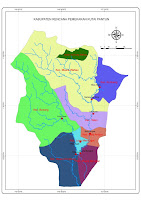kota kinabalu - borneo action diveshop - travel guide
 Thursday, April 15, 2010
4:15 AM
Thursday, April 15, 2010
4:15 AM
 edwin mba
edwin mba
Labels: kota kinabalu - borneo action diveshop - travel guide , 0 comments
* Kinabalu
Kinabalu may refer to any of several Malaysian geographical names: Kota Kinabalu , the capital of the Malaysian state of Sabah. ...
301 B (37 words) - 05:15, 21 April 2009
* Mount Kinabalu
Mount Kinabalu (Gunung Kinabalu) is a prominent mountain in Southeast Asia . It is located in Kinabalu National Park (a World Heritage ...
16 KB (2,341 words) - 08:59, 13 April 2010
* Kinabalu National Park
Kinabalu National Park or Taman Negara Kinabalu in Malay , established as one of the first national parks of Malaysia in 1964, is ...
5 KB (686 words) - 12:51, 28 February 2010
* Kota Kinabalu
Kota Kinabalu (ˈkɔtɑ kɪnɑbɑlʊ; 亚庇, formerly Jesselton, is the capital of Sabah state in Malaysia . It is also the capital of the West ...
52 KB (7,798 words) - 20:03, 5 April 2010
* Kota Kinabalu International Airport
Kota Kinabalu International Airport (KKIA) BKI | WBKK serves the city of Kota Kinabalu , the state capital of Sabah , Malaysia . ...
18 KB (2,406 words) - 13:45, 12 April 2010
* Kinabalu giant red leech
The Kinabalu giant red leech is a large (≤30 cm long) bright orange-red coloured leech that is endemic to Mount Kinabalu , Borneo . ...
2 KB (251 words) - 08:35, 24 April 2008
* Kinabalu giant earthworm
The Kinabalu giant earthworm, Pheretima darnleiensis, is a grey-blue coloured peregrine annelid native to Mount Kinabalu , Borneo and ...
2 KB (225 words) - 03:50, 31 May 2009
* Kinabalu Squirrel
The Kinabalu Squirrel (Callosciurus baluensis) is a species of rodent in the Sciuridae family. It is endemic to Malaysia . References ...
1 KB (118 words) - 23:49, 26 January 2010
* Dewan Bandaraya Kota Kinabalu
Dewan Bandaraya Kota Kinabalu (DBKK) or Kota Kinabalu City Hall is the city council which administers the city and district of Kota ...
1 KB (165 words) - 18:44, 18 August 2009
* Kota Kinabalu Wetland Centre
Kota Kinabalu Wetland Centre is the only remains of 24 hectares of mangrove forest that once existed extensively along the coastal region of ...
5 KB (651 words) - 18:12, 18 August 2009
* Kinabalu Horned Frog
The Kinabalu Horned Frog (Xenophrys baluensis) is a species of amphibian in the Megophryidae family. It is endemic to Malaysia . ...
1 KB (110 words) - 01:45, 23 May 2008
* La Salle Secondary School, Kota Kinabalu
La Salle School, Kota Kinabalu (Malay : Sekolah Menengah La Salle Kota Kinabalu) is a co-educational secondary school for boys and girls ...
7 KB (1,017 words) - 00:13, 15 March 2010
* Roman Catholic Archdiocese of Kota Kinabalu
The Roman Catholic Archdiocese of Kota Kinabalu (Lat: Archdioecesis Kotakinabaluensis) is an archdiocese of the Latin Rite of the Roman ...
3 KB (344 words) - 04:21, 25 August 2009
* Kota Kinabalu City Mosque
The Kota Kinabalu City Mosque is the second main mosque in Kota Kinabalu , Sabah , Malaysia after State Mosque . Kota Kinabalu as city status. ...
607 B (58 words) - 13:42, 17 December 2009
* Nepenthes × kinabaluensis (redirect from Kinabalu Pitcher-Plant)
or the Kinabalu Pitcher-Plant is the natural hybrid between N. rajah and N. villosa . Kambarangoh on Mount Kinabalu , Borneo by Lilian ...
6 KB (829 words) - 22:50, 24 March 2010
* Kota Kinabalu West Coast Parkway
Kota Kinabalu West Coast Parkway or Lebuhraya Pantai Barat Kota Kinabalu is a major highway in Kota Kinabalu city, Sabah , Malaysia ...
2 KB (177 words) - 21:18, 20 March 2010
* Bornean Leafbird (redirect from Kinabalu Leafbird)
The Bornean Leafbird (Chloropsis kinabaluensis), also known as the Kinabalu Leafbird, is a species of bird in the Chloropseidae family. ...
2 KB (199 words) - 20:19, 13 October 2009
* Layang-Layang (Mount Kinabalu)
Layang-Layang (Dusun for Place of Swallows) is the name of an area of Mount Kinabalu , Sabah , Malaysia , where the Mesilau Trail meets ...
313 B (34 words) - 06:56, 3 November 2009
* Sabah
The capital of Sabah is Kota Kinabalu , formerly known as Jesselton . Sabah is known as "Sabah, negeri di bawah bayu", which means "Sabah ...
53 KB (7,470 words) - 23:07, 14 April 2010
* Kuala Lumpur Inner Ring Road (redirect from Jalan Kinabalu)
(Jalan Shaw) and Federal Route 1 (Jalan Kuching, Jalan Sultan Hisamuddin (Victory Avenue), Jalan Kinabalu and Jalan Maharajalela (Jalan Birch). ...
15 KB (1,245 words) - 21:15, 20 March 2010


